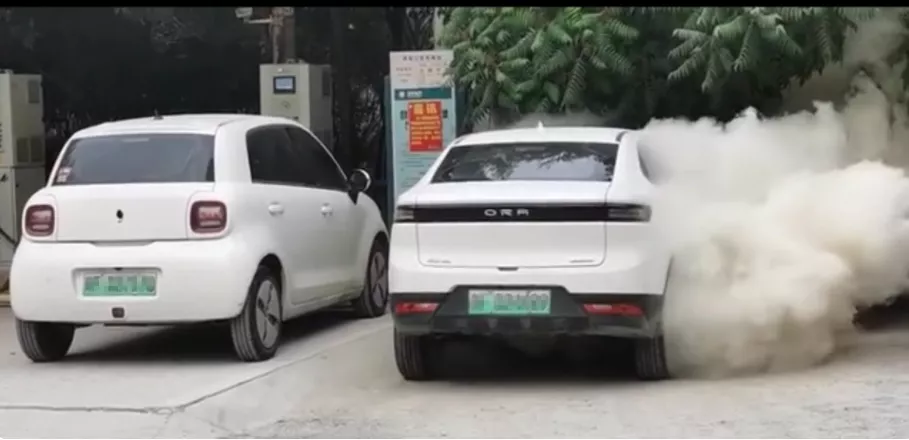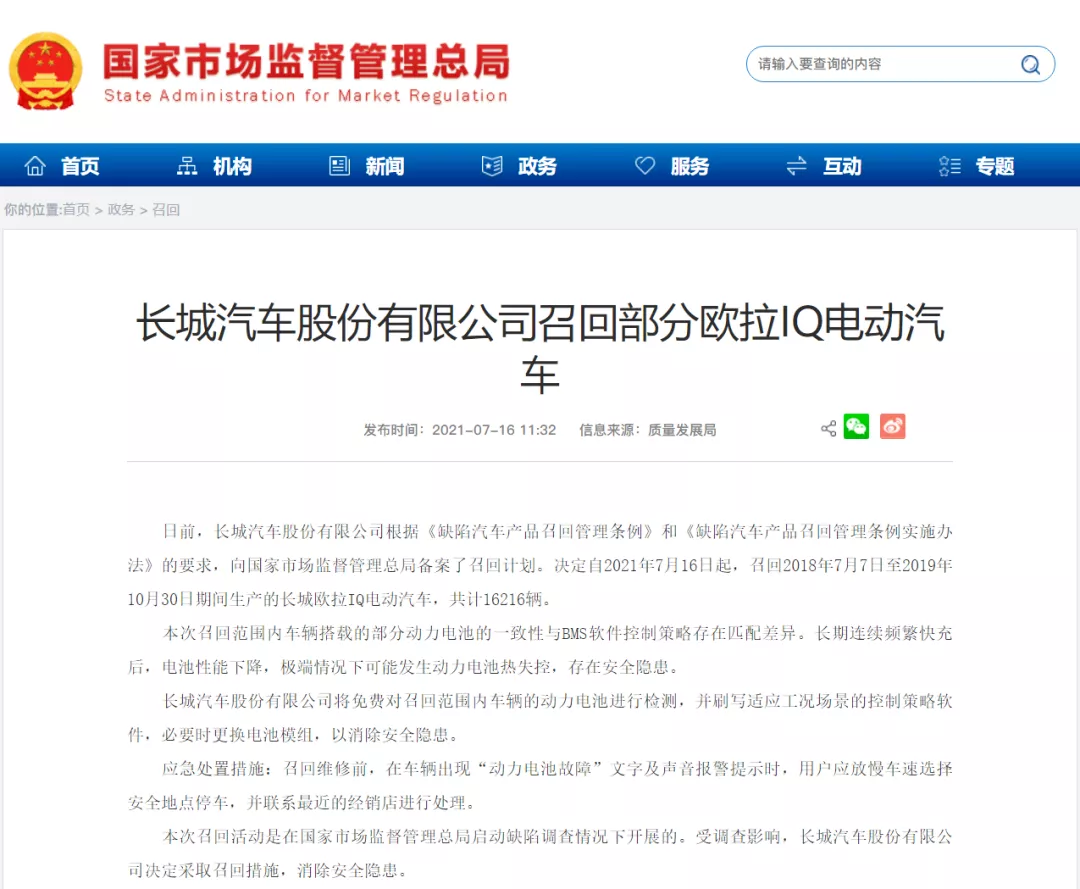Introduction: On one hand, Ora uses co-creation to attract new users, and on the other hand, selective amnesia disappoints old users. If this continues, Ora, which has just taken off, may be at risk of falling. As for Ora’s expected annual compound growth rate of three times and annual sales of one million vehicles, if old users are treated in this way, the result seems even more far-fetched.
In the last two years, undoubtedly, the brand’s marketing that has left the deepest impression on people is the Ora led by Yu Fei. Although the product strength of the Ora models is average, it has reached the extreme in terms of concepts such as categories, women, and retro, making the public very happy.
In the first half of this year, Ora’s sales were already equivalent to last year’s full-year sales, and 100,000 vehicles this year are not a problem. Yu Fei expects Ora’s annual compound growth rate to reach three times in the next three years, and sales to reach one million vehicles in 2023.
However, the Ora iQ spontaneous combustion and recall incidents have also revealed Ora’s real marketing level. Previously, we reported that in July, several incidents of Ora IQ models catching fire during charging occurred in Taiyuan, Shanxi, which caused some charging stations to prohibit or restrict the charging of the Ora series.

Recently, a Ora IQ car owner in Hangzhou also reported that: “After the recall event in July, the manufacturer did not give us car owners an acceptable solution. They only forced an upgrade of the BMS (battery management system), but the upgrade reduced the endurance mileage of the car, and the charging time also became longer. It did not completely solve Ora IQ’s battery safety issues.” The above is not an isolated case.
Regarding Ora’s marketing underlying logic, Yu Fei stated that from the perspective of involving co-creation throughout the entire product life cycle around users. However, in terms of Ora iQ’s treatment of old users, Ora’s co-creation marketing obviously did not pass, or it is just surface co-creation.
On one hand, Ora uses co-creation to attract new users, and on the other hand, selective amnesia disappoints old users. If this continues, Ora, which has just taken off, may be at risk of falling. As for Ora’s expected annual compound growth rate of three times and annual sales of one million vehicles, if old users are treated in this way, the result seems even more far-fetched.
A Failed Recall
Since the multiple incidents of Ora IQ battery spontaneous combustion in July, Great Wall Ora had to issue a notice announcing the recall of 16,216 units of Great Wall Ora IQ electric vehicles produced between July 7, 2018, and October 30, 2019, starting from July 16, 2021.
 The manufacturer of Great Wall Euler announced that there is a matching difference in consistency and BMS software control strategy for some power batteries installed in vehicles within the scope of this recall. After long-term continuous and frequent fast charging, the battery performance will decline. In extreme cases, thermal runaway of the power battery may occur, posing a safety hazard.
The manufacturer of Great Wall Euler announced that there is a matching difference in consistency and BMS software control strategy for some power batteries installed in vehicles within the scope of this recall. After long-term continuous and frequent fast charging, the battery performance will decline. In extreme cases, thermal runaway of the power battery may occur, posing a safety hazard.
The solution provided by the manufacturer is to conduct free inspections on the power batteries of recalled vehicles within the scope and re-flash the control strategy software that adapts to the working condition scenario. If necessary, replace the battery module to eliminate safety hazards.
It can be seen that the reason why the Great Wall Euler IQ battery caught fire multiple times is mainly due to the mismatch between the BMS (battery management system) control algorithm and the installed battery, and the final solution direction is to replace the battery. As for Euler IQ car owners, the vehicle’s BMS cannot be seen or touched. However, in terms of the electric vehicle fire news circulating on the Internet, the rigid impression that lithium-ion batteries are prone to combustion accidents is left behind.
From the manufacturer’s point of view, if the fire safety hazard can be reduced or eliminated by just upgrading the BMS algorithm, then it is the most cost-effective and practical solution. After all, the battery module of electric vehicles still accounts for a large proportion of the manufacturing cost. In addition, the Euler IQ model has been discontinued, and requesting Farasis Energy Technology to mass-produce outdated vehicle battery modules again would require considerable engineering effort and cost.
As we mentioned in a previous article, the Euler IQ model uses Farasis Energy Technology’s 46.7 kWh lithium-ion battery. After Great Wall Euler announced the recall, Farasis Energy Technology also acknowledged that “there is a matching difference in consistency and BMS software control strategy for some power batteries,” but at the same time stated that the company only supplies the module carried by IQ recalled by Euler, and ” BMS is not the company’s product or supply”.
When responding to the recall event, Euler brand stated that the BMS control strategy was jointly developed and verified by Great Wall Motor and Farasis Energy Technology. The reason for this recall is not related to BMS hardware or software production, but only to the development of the control strategy. The specific proportion of responsibility is to be negotiated and communicated by Great Wall Motor and Farasis Energy Technology. As for the specific responsibility allocation, no one knows.
However, the subsequent result of handling the matter is that Euler IQ car owners were dissatisfied that the manufacturer not only did not replace the battery but also reduced the usable battery power by upgrading the BMS, which resulted in what is commonly referred to as the manufacturer using technical means to “lock” the battery, or control that the battery cannot be fully charged. This also caused a decrease in charging efficiency and lengthened the charging time. It can be understood that the Euler manufacturer hopes to control the charging input power through technical algorithms to reduce the risk of thermal runaway caused by high-power input and resulting in combustion accidents.## Don’t Sacrifice Quality for Quantity
Recently, the issue of “lock doors” in the Guangzhou-Toyota iA5 has put the car manufacturer in hot water. iA5 owners are taking legal action against Guangzhou-Toyota for updating the car’s battery management system (BMS) via backdoor OTA without user consent. This action is believed to have decreased the car’s power output and ability to travel long distances, which has angered car owners and caused a stir in the media.
This is similar to the situation with the Eurkea New Energy’s Eura IQ recall, where the proposed solution has harmed the car’s performance and left car owners feeling dissatisfied.
Car owners do not appreciate car manufacturers sacrificing customer interests to ensure the safety of a car’s battery and electrical management controls. This solution has done more harm than good, as it fails to reassure car owners and gain public trust in new automobile technology. The manufacturer’s reputation is harmed, which affects future marketing campaigns and the development of the brand.
Eurkea IQ’s sale rate may be small and most of its cars are used for ride-sharing services, but the impact of a “lock door” recall on its first car model could have serious consequences on Eurkea’s reputation and future developments. If Eurkea fails to handle the “lock door” recall properly, its reputation could worsen, impacting not only its current customers, but also potential ones.
If Eurkea IQ does not want to spend a large amount of time, money, and resources fixing old models, it could alternatively offer discounted prices and charging benefits to old customers looking to replace their old models with new Cat-series cars. By doing so, Eurkea can secure customer loyalty and decrease the likelihood of any more detrimental incidents.Recently, Great Wall Motors detailed the various aspects of its Deyun Battery Technology for the first time to the public. Great Wall Motors hopes to demonstrate a new battery safety approach to consumers through the Deyun Battery Technology system. According to Great Wall Motors, the Deyun Battery Technology can “never ignite, never explode” during the battery’s normal lifecycle, achieving new heights in power battery safety. It is reported that the Deyun Battery Technology adopts the core logic of “evacuation as the primary means of handling thermal runaway.” Similar to the concept of “diverting water rather than damming it” used in the Great Yu’s flood control, the gas and fire flow are safely diverted out of the battery pack through designated channels, ensuring the safety of the battery pack.
Last week, NIO also launched an innovative ternary iron lithium battery that not only solved the inaccurate SOC measurement problem of lithium iron phosphate batteries, but also the low-temperature efficiency problem. Guangzhou Automobile Group’s Aion released its “non-combustible, non-igniting” “Magazine Battery,” while BYD is particularly proud of its blade battery. It can be seen that major car manufacturers hope to make safety the primary consideration in battery technology and are eager to have control over it.
This article is a translation by ChatGPT of a Chinese report from 42HOW. If you have any questions about it, please email bd@42how.com.